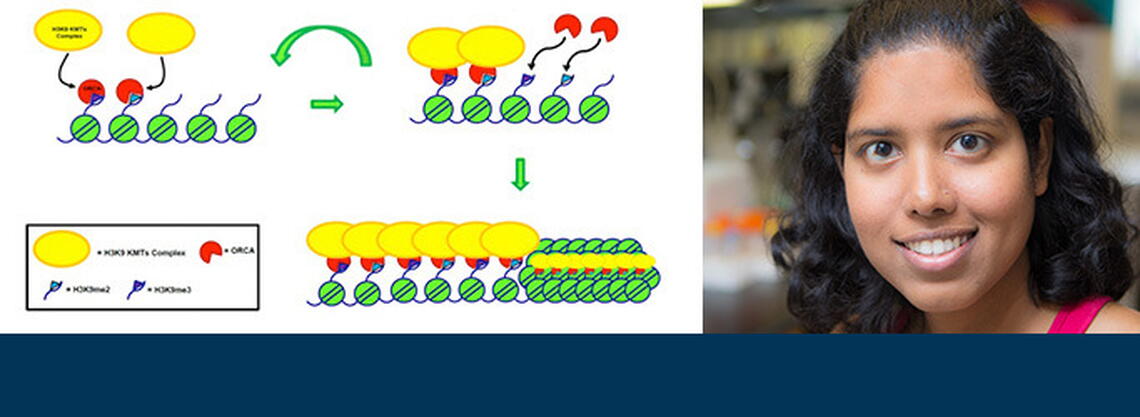
Origin Recognition Complex Associated (ORCA) organizes heterochromatin by assembling histone H3 lysine 9 methyltransferases on chromatin.
Organization of our genome into gene rich, active euchromatin and gene poor, inactive heterochromatin is crucial for maintaining cellular identity and cell fate. The pre-replication complex orchestrates replication initiation in eukaryotic cells. One of its crucial component proteins, ORCA/LRWD1, localizes to heterochromatin in post replicated cells and its function at these repressive regions remained unknown.
In a recent publication, lead author, Sumanprava Giri, a graduate student in the lab of Dr. Supriya Prasanth, shows ORCA interacts with multiple repressive H3K9 lysine methyltransferases (KMTs), namely G9a/GLP and Suv39H1. Giri and collaborators also demonstrated that ORCA directly binds to the marks catalyzed by these KMTs, namely, H3K9me2 and me3. Depletion of ORCA resulted in the loss of H3K9me2 and me3 on chromatin. The work showed that ORCA acts as a scaffolding factor and leads to the stabilization of H3K9 KMTs megacomplex. Further, the role of ORCA in heterochromatin organization is independent of its role in replication initiation.
The story uncovers an extremely interesting crosstalk between DNA replication machinery and repressive H3K9 KMTs. This work was published in eLIFE.
